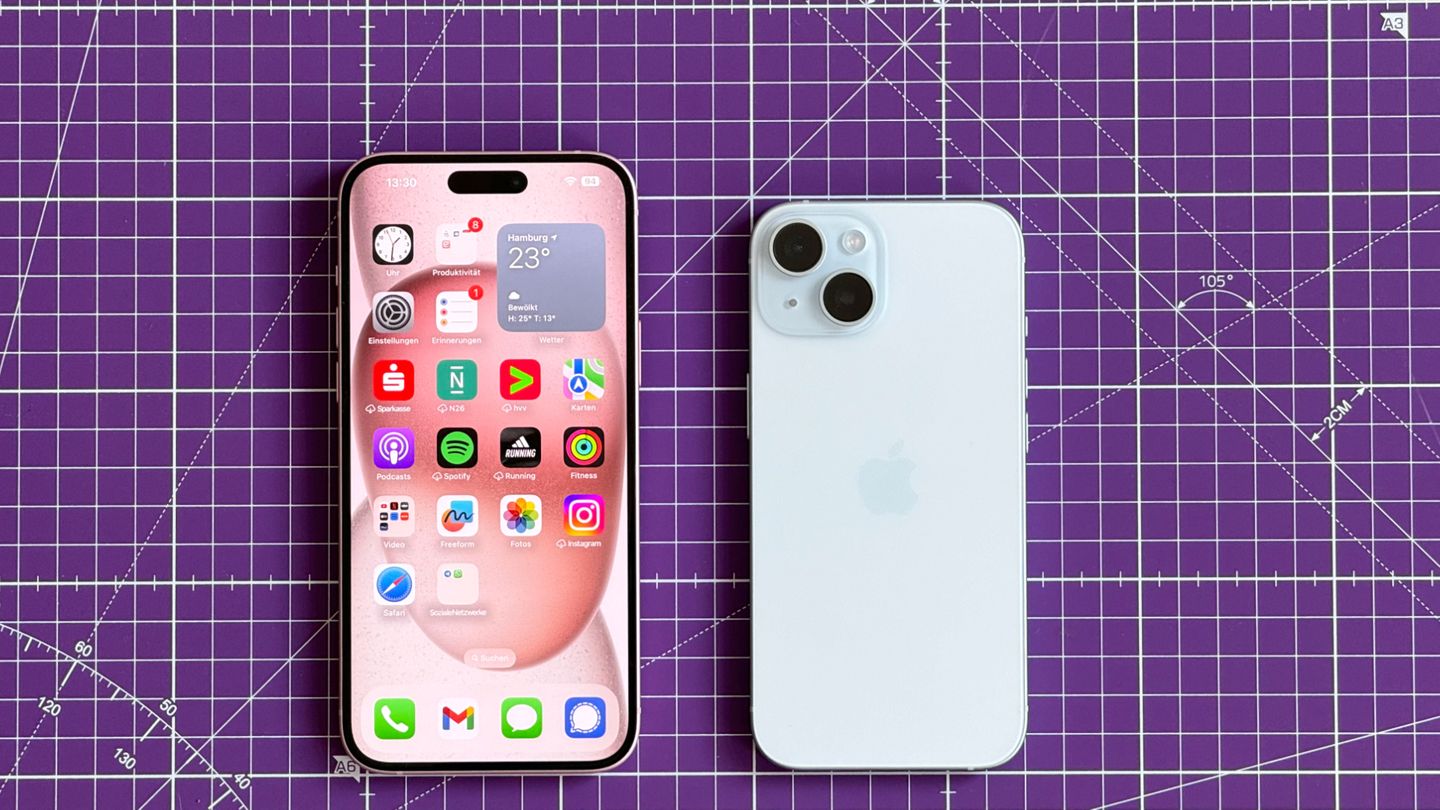Now available iOS 17.3 is here: How the new iPhone update should protect you from theft
iPhone 15 (right) and iPhone 15 Plus are two of the new iPhone models
© Malte Mansholt / stern
iOS 17.3 has been available for download since yesterday. You never actually want to have to use the most important new feature – but it’s still useful.
When you think of theft protection, security measures such as locks, alarm systems or tracking come to mind. With the new However, iOS 17.3, Apple is now bringing simple software solutions to your iPhone that are intended to protect it better – by simply making it less attractive to thieves.
This is how the improved theft protection works
If desired, the update also locks down important settings on the iPhone. If you want to read passwords, erase the device or switch off location tracking via Apple’s “Where is” system, in the future just the passcode will no longer be sufficient. The owners then have to identify themselves with biometric data such as the FaceID facial recognition or the TouchID fingerprint sensor.
For some particularly critical settings, the protective measures go even further: if you want to change the password for the iCloud cloud service, add another face to FaceID or turn off theft protection, you not only need biometric identification, but you even have to wait an hour.
Unattractive to thieves and robbers
The measures have one main goal: Even if the device is unlocked at the time of theft or the owner is forced to unlock it, it cannot then simply be reset and used or evaluated by someone else. This doesn’t make the iPhone any harder to steal – but it makes it virtually impossible to use.
Apple has already proven that such measures work: With iOS 7, they introduced a protective measure through which the device is linked to an iCloud account – and cannot be separated from it by resetting it. They can also be deleted remotely. The effect was noticeable: the New York public prosecutor’s office confirmed just one year after its introduction that iPhone thefts had fallen by 30 percent, and other cities reported similar figures, according to a report in the Wall Street Journal. Since Google’s Android system introduced similar protection features, the number of smartphone thefts has fallen even further.
Protection against common meshes
The new measures are now specifically aimed at two variants that still occur frequently: If the smartphone is not stolen secretly, but stolen under threat, the robbers can also force the victim to unlock it. However, the new biometrics and time blocks also make this less attractive.
A variant of circumventing the theft measures is now also being prevented: victims of theft repeatedly report that their devices ended up abroad – and from there they were bombarded with messages asking them to turn off the lock remotely. If you give in at some point in annoyance, the thieves have won. But because biometric data is now required, this scam becomes impossible.
Of course, Apple also knows that introducing such drastic restrictions can cause problems. The new protective measures are therefore not switched on automatically, but must be switched on manually in the settings under “FaceID and Code” or “TouchID and Code”. If you want, you can also allow the measures not to take effect in certain places such as home. This makes it more convenient to use. If you want to sell or pass on the device, the measures must of course be switched off again.
For iPhone and iPad
Apple gives insight: These were the Germans’ favorite apps this year
iOS 17.3: This is also included
In addition to the new protective functions, there are mainly smaller innovations. Airplay now supports the option to stream directly to the hotel TV in select hotels. The music app offers shared playlists and participants can comment on added tracks with emojis. All devices with Apple Care coverage can now be viewed directly in the settings. And the accident detection for iPhone 14 and 15 has been further improved. In addition, there are several closed security gaps.
iOS 17.3: How to get the update
The new system has been available for download since Monday evening; it is installed automatically in the standard setting if the iPhone has a power supply and a WiFi connection at night. Alternatively, you can load it manually by initiating the installation in the settings under “General” and “Software update”.
Sources: Apple, Wall Street Journal
#Subjects
